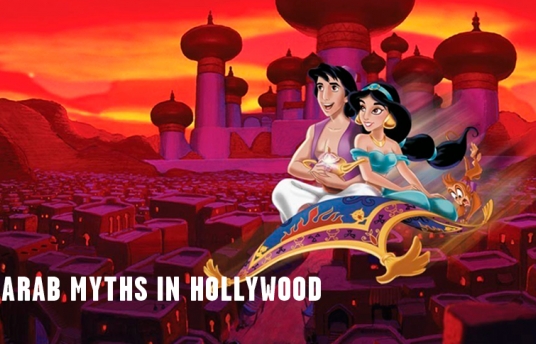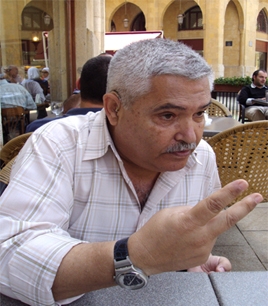Arab Mythology in Hollywood
Jul 12, 2012

Written by Reem Saleh, Digital Department, DFI
From Aladdin and Sinbad the sailor to Scheherazade and the famous Ali Baba, there’s no doubt that ‘The Arabian Nights’ tales inspired Hollywood and western cinema to produce hundreds of films. The West needed an exotic escape to fantasy, but has this fascination triggered more exposure to Middle Eastern mythology, or simply increased misrepresentation?
Film critic Ibrahim Al Ariss, currently at leading pan-Arab newspaper Al Hayat, speaks to Doha Film Institute (DFI) about the most popular stories lent to Hollywood’s big screens dating back to the silent film era.

Ibrahim Al Ariss - Film Critic
“The early representations witnessed different nuances of Scheherazade in relation to Shahryār. The same applies to Sinbad, who was popular also because of his similarity with the Greek Odysseus,” he said. “Aladdin (also) had a fair share of popularity … At a later stage the West reinterpreted certain tales of the desert and tribal stories through the legends of Karim Ibn al-Sheikh – the adventurous lover who gave American actors like Rudolph Valentino a breakthrough to stardom. Famous Arabs in Hollywood were also interpreted by Douglas Fairbanks, Errol Flynn and Tyrone Power. On the other hand, some historical events started to become mythological once turned into film like “Lawrence of Arabia”.
Envy or orientalism?
Why the interest? Did filmmakers see a magic in the Middle East they lacked at home?
“What attracted Hollywood and others in oriental or Arabic legends is the fantastical dimension,” Al Ariss explained, and themes of “individual heroism, forbidden love and the obstacles the protagonist faces in reaching his goals.
Most likely cinema inherited this interest from arts and European literature three or four centuries ago. The East provided fictional stories…a fantastical realm the westerner lacked.”
During the Renaissance, people had a cold and rational take on life focusing on reality and more pragmatic issues, reckons Al Ariss. “They needed an exotic withdrawal.”
Antoine Gallard’s ‘Arabian Nights’ translation in 1704 was immensely popular at the time. Given its iconic status, the stories led to a burst of new cultural interpretation; operas, novels, children books and paintings.
“The influence remained for at least two centuries – going as far as including fashion. It was only natural then for cinema to be motivated with these widespread themes, with remarkable turnout,” said Al Ariss.
Misrepresenting the Middle East thorough mythology
Who doesn’t remember Disney’s 1992 production of “Aladdin”? It was dubbed in over 20 languages and enjoyed remarkable international success (the film made $504 million worldwide). But not everyone was impressed. Arab Americans criticised the music, accusing the lyrics of the opening song as racist.
In 1993, a rare incident took place; Disney altered the lyrics as shown in this video
Aladdin Changed Lyrics
كلمات أغنية علاء الدين التي تغيرت
“There was, of course, a misrepresentation of the Eastern and Arabic mythologies in some films,” says Al Ariss. “But I personally don’t think of it as a ‘conspiracy’ as many critics like to call it. They practically see conspiracies everywhere. I think that some films made fun of our myths as they did of other cultures, and some silly films didn’t know how to take advantage of our rich heritage. To be honest, I think Arab cinema had its share of harming our mythology, the same way the West did. But most of the time, it’s not triggered by bad faith.”
Hopes are high amid a boom period for the region’s film industry to see more Arab tales originating from within. The cultural nuances that locals can detect should add unique details to productions. Throughout DFI’s Mythology Fortnight, the organisation has come across many talented filmmakers who may become tomorrow’s storytellers. Perhaps one may create the region’s first major mythological superhero movie.